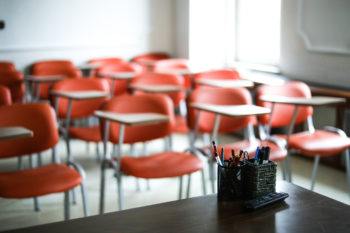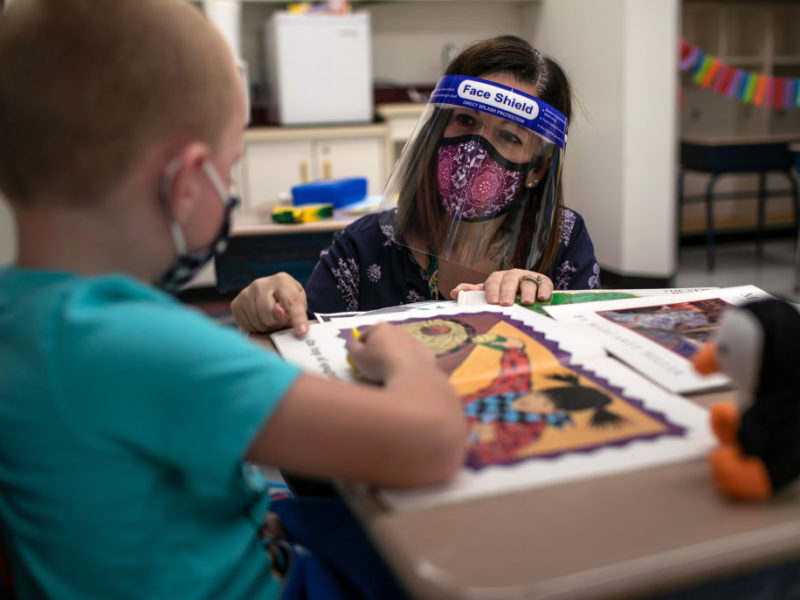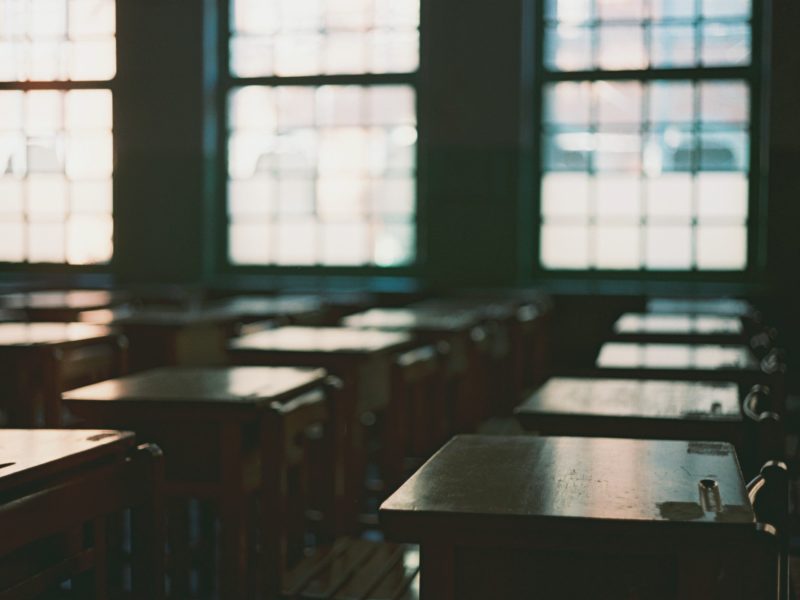Should You Send Your Child Back To The Classroom?

As school districts across the state begin finalizing plans for returning to the classroom in August, parents are facing their own struggles. On July 21, the Texas Education Agency released new guidelines highlighting flexible options for school districts and parents. Now, parents must decide whether to send their child back to the classroom or continue virtual or homeschool education.
The Texas A&M University College of Education & Human Development spoke with Quinita Ogletree, a lecturer in the Department of Teaching, Learning and Culture, about how these changes could impact children and families. As an education expert and mother, Ogletree understands both sides of the debate.
What do you feel are the main reasons parents may choose to send their children back to the classroom? How about reasons to keep them home?
“One of the main reasons for returning children to the classroom is getting back to normal. The parents may not be prepared to support their children as teachers or tutors, especially working parents. One reason to keep children home is safety, especially if your child or a person in your home is in one of the risk categories.”
The American Academy of Pediatrics made a general recommendation that children physically return to school for social and emotional benefits as well as racial and socioeconomic inequities. Do you agree?
“As a parent, I have discussed the social and emotional benefits with my husband. Two of our children would benefit from social and emotional school interactions. However, the risk outweighs the benefits for me because I can create ways to meet their social and emotional needs that would have less risk than going to school. Parents also should consider regular check-ins (three to four times a week) with their children to check on their social-emotional health. Ask them how they are doing and even have a weekly family game night to work on social skills. Games help develop a variety of skills, such as self-regulation, cooperation and communication.
Racial and socioeconomic inequities will exist if they are at home or school because they were already there. There is a chance they may become more substantial because of the lack of access. However, school districts are trying to address these issues by providing laptops, internet access and other tools to help their students.”
If parents choose to send their children back to school, what do you recommend they do to be prepared at home if their child has to be quarantined or schools have to close?
“I believe parents should have a backup plan. This plan should include a learning area for your child, a schedule and online or print reading material. Parents can also use this time to have a child explore an area of interest. My children have studied music, sewing, art and construction.
It is also important to admit you don’t have all the answers to your child’s questions. Express to your child that their anxiety and uncertainty are healthy but be aware when they may need more support.”
How do you feel what happened as an emergency response in the spring will be different from the virtual learning in the fall? What might parents have learned to help prepare them for the upcoming school year?
“The emergency response is different from virtual learning in the fall because the schools were not prepared. They had a learning curve, and several schools made modifications after a few weeks. During the summer, schools had time to research best practices and train their teachers. Parents have also learned what type of learner their child is in their home academic environment.”
What are some struggles parents may face at home if they choose virtual learning for their children?
“One of the hardest areas is the schedule. The schedule needs to be consistent and written. You should post the plan somewhere your children can see it. I understand there may be some variation, but your children should know what to expect. Parents should create a schedule that has active, inactive, research and creative times. There should also be regular wake up and bedtimes.
Do you have resources or a support system to cover your needs and deficiencies? Parents may need to reach out to their friends who are educators or other parents.”
Some parents are opting to home school instead of choosing virtual schooling. How are the two different? What do you feel are pros and cons of each?
“In homeschooling, the parent selects the curriculum and is the teacher for their child. In virtual schooling, the curriculum is set by the district or another educational establishment, and there is a virtual teacher. The pros for homeschooling are the parent directs the curriculum; however, it is highly parent-directed. The district or educational organization directs virtual schools. Parents will still need to support it by assisting their children as needed.”
What are some of the questions parents should consider before deciding to send their children back to the classroom?
- Do you have someone in your home that is at high risk?
- Do you have the capability to homeschool or virtual school your child?
- If you are working, do you have the flexibility needed to homeschool or virtual school your child?
- What were the strengths and weaknesses in your child’s schooling during quarantine? (Ask yourself and ask your child)
- Do you have a plan if your family has to do the 14-day mandatory quarantine because someone in your household has been exposed?
- Do you have the resources and support needed to give your child the same education he or she was receiving in his or her previous educational environment?
What could be the long-term impact of COVID-19 on a child’s education?
“It depends. For some children, it will increase the inequities they are already experiencing. For some, it will have allowed them to experience differently. It will give some students time to explore their interest areas. It could also impact a child’s social/emotional skills because of the lack of engagement with others. We live in a world where some feel technology has weakened personal/communication skills. We may be creating more of a virtual world for our children.”
If you have children, how are you making the decision?
“I have five daughters, and three are still in public school. One is high school, and two are in elementary school. I am examining what type of learners they are and what will be the best educational environment for them.
My husband and I are still discussing this decision. One reason is that the district has not announced its plans. Secondly, we are considering the social and emotional impact, anxiety levels, and the loss of physical activity for our children. We also plan to a trial run on homeschooling or virtual schooling before making a final decision.”
This article by Ashley Green originally appeared on the College of Education & Human Development website.





